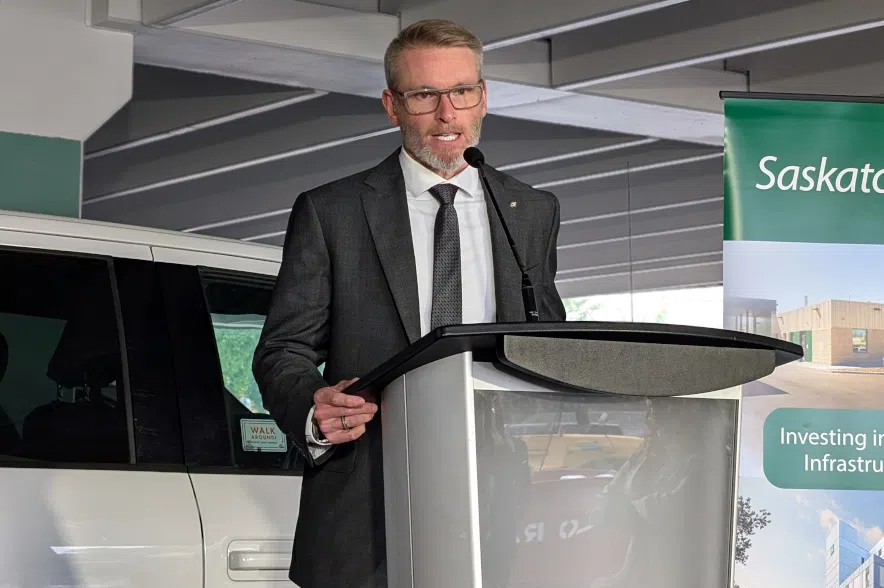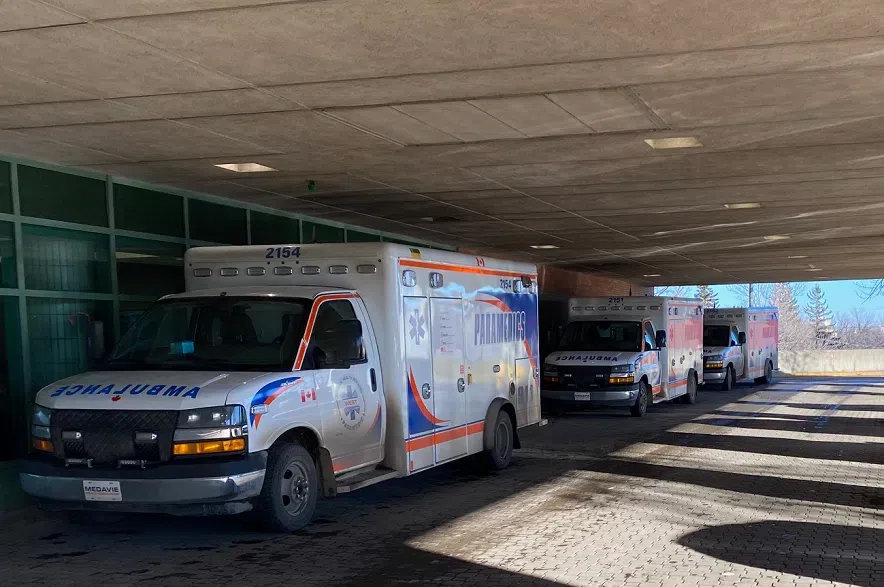The Saskatchewan NDP says a troubling situation is unfolding at hospitals in Saskatchewan.
On Tuesday, NDP Health Critic Vicki Mowat said conditions at St. Paul’s Hospital in Saskatoon are worse now than they were when nurses took to the streets to protest back in November.
“I think it just reached more of a crisis point,” she said.
Mowat said she’s heard from health-care workers at the hospital that there are not enough beds for all the patients who need to be admitted.

NDP health critic Vicki Mowat says something needs to be done about the situation in Saskatchewan hospitals. (Shane Clausing/650 CKOM)
“Health-care workers have been given no other choice but to treat people in hallways and ambulatory care, in violation of the fire code,” Mowat said.
On top of that, Mowat said one worker told her about a patient who had to wait in the ER for 140 hours – nearly six days – before receiving care. She said another eight people waited over 100 hours – more than four days – in the same ER.
“The health-care workers we are hearing from are scared that someone is going to die in the waiting room before they can get care,” said Mowat.
If that happens, Mowat said the workers would not only have to live with the fact, but it could also jeopardize their licences.
Mowat said similar issues are happening at Royal University Hospital and Regina General.
In a social media post on Wednesday, the Saskatchewan Union of Nurses shared a text from a health-care worker about the situation at the Royal University Hospital ER.
The message said 42 patients were waiting for beds upstairs while five additional consults were set to be admitted with nowhere to go. The text said there were 12 beds in hallways, including “combative patients” and multiple patients restrained and going through withdrawal.
“Our patients are suffering,” the text shared by the union read. “This has gone on for far too long.”
According to another post from the nursing union, there were five ambulances waiting indefinitely in the ER at Royal University Hospital on Monday, along with an overflowing waiting room and 28 patients waiting for beds, with none available.
Mowat said something needs to be done about the situation.
“Part of that is about taking the nurses up on their call to implement a nursing task force that would be specifically focused on the retention of workers,” said Mowat.
“We know that there have been efforts into recruiting health-care workers, but we also need to keep the ones that we have around, and part of that is by listening to people who are on the front lines.”
Government responds to concerns
Andrew Will, CEO of the Saskatchewan Health Authority, said the health-care system sees fluctuations over time.
“In the past seven days we’ve seen a 12 per cent increase in those coming to the emergency room so we know we are in a peak time,” he explained.
When asked what the health authority is doing in the short term to deal with crowding, Will said there are leaders on site working on improving patient flow and getting the hospitals back to normal operations.
Will also pointed to the health authority’s Capacity Pressure Action Plan which were implemented last year in order to help ease pressure on the province’s hospitals and emergency rooms. In February, the health authority said it added more than 100 community and hospital beds to Saskatoon and Regina through the plan.
Health Minister Everett Hindley also pointed to “ebbs and flows” of the health-care system and the capacity action plan, and spoke about working with the health authority to make sure it is making the best possible use of the limited space in hospitals.
“Is there an opportunity to perhaps move some services or programs that are in our hospitals into other settings so that we can maximize the type of care that we need to be delivering in a hospital in that particular building?” asked Hindley.

Health Minister Everett Hindley spoke about ebbs and flows in the health-care system as some hospitals deal with overcrowding. Aug. 28, 2024 (Lisa Schick/980 CJME)
The health minister also said broader work is being done on things like expanding the scope of practice for groups like pharmacists and nurse practitioners, and providing other options for primary care outside of hospitals.
“It doesn’t necessarily mean we’re going to see changes and improvements overnight, but I think it’s all part of a process. It’s why we’re working closely with groups like the Saskatchewan Medical Association to try and address some of those challenges,” said Hindley.
Premier Scott Moe said there is planning underway to help relieve the pressure, including an urgent care centre in Saskatoon. The premier noted that the centre in Regina, which opened last month, has been effective in relieving the pressure on hospitals.
“We look to the very same stabilization in the community of Saskatoon as soon as we’re able to get that infrastructure up and running,” said Moe.
The two centres were announced at the same time, but Regina’s recently opened while Saskatoon’s was slowed down at the site-selection stage.
–with files from 980 CJME’s Lisa Schick











